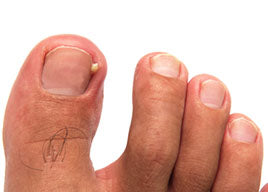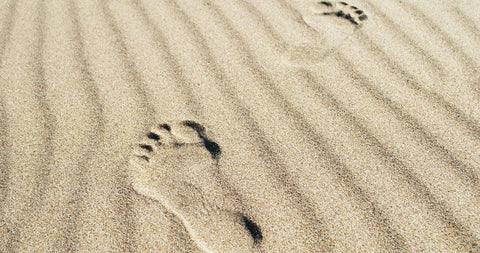
Ingrowing toenail
The pain of an ingrowing toenail can be very irritating. The painful sensation with every step you take can be very hard to live with. Whether you’ve got a predisposition to them, you’ve overdone the nail clipping, been squeezing into those shoes that are a little too tight or they come as a side effect of your regular workout, here’s some information to help you understand what’s causing it and how to help alleviate the pressure.
This is not a diagnostic tool. this healthcare professional does not endorse Scholl products and were paid by the makers of Scholl for their time in producing this video
What is ingrowing toenail?
With an estimated 10,000 new cases* in the UK each year, ingrown toenail is very common. It develops when the sides of the toenail grow into the surrounding skin – causing redness, inflammation and in severe cases can sometimes leading to a localised infection.

What are the symptoms of ingrowing toenail?
The big toe is most commonly affected – either on one or both sides of the nail. The first signs include redness around the nail bed, tenderness of the skin at the end of the toe and pain if pressure is applied to the area. More progressive symptoms if the nail pierces the skin can include infection where fluid oozes from the nail (usually yellow or green in colour), bleeding and increased levels of pain.
What causes an ingrowing toenail?
An ingrowing toenail typically affects teenagers and young adults the most. A number of things can cause an ingrowing toenail to develop and if left untreated, could pierce the skin.
Many things can cause an ingrowing toenail, including:
- Cutting toenails incorrectly, too short, especially around the edges which can encourage the nail to grow into the skin.
- Wearing tight-fitting shoes, socks or tights that put a lot of pressure on the big toes makes nails more likely to curve into the skin.
- Sweaty feet can lead to softer skin around the nail, and a softer nail, so it becomes easier to bend the nail into the skin.
- A toenail injury such as stubbing your toe, dropping something heavy on your foot or kicking a ball repeatedly.
- Irregular, naturally curved toenails are more likely to press into the surrounding skin.
Tips for avoiding and managing an ingrowing toenail
Ingrowing toenails are not usually serious, however in some cases without treatment, an ingrown toenail could become infected. The following steps can help avoid developing an ingrowing toenail:
- Keeping feet clean, washing them regularly with soap and water and dry them thoroughly.
- Wearing comfortable, well-fitted shoes.
- Cutting toenails straight across the top to help prevent them from embedding in the skin.
- If you have an existing condition such as diabetes, poor circulation, a reduced immune system or if the toenail does not respond to home treatments or an infection occurs, please contact your local healthcare professional for further advice.
*Figures from the Pharmaceutical Journal. Accessed: June 2019.
Please see a healthcare professional if home treatments are not helping, if the toe is very painful, bleeding or infected and if you have a high temperature.
UK/SC/0319/0049q
